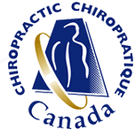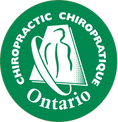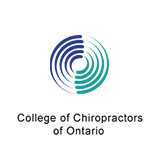
WHAT IS CHIROPRACTIC?
Chiropractic is a non-invasive, hands-on health care discipline that focuses on the musculoskeletal system.
Chiropractors practice a manual approach providing diagnosis, treatment, and preventive care for disorders related to the spine, pelvis, nervous system, and joints.
For many conditions, such as lower back pain, chiropractic care is frequently the primary method of treatment. Where other conditions exist, chiropractic care may compliment or support your medical treatment by relieving the musculoskeletal aspects associated with the condition.
Chiropractic care may also be used to provide symptomatic relief for patients with chronic conditions. By treating the musculoskeletal elements of such disorders, chiropractic treatment has been shown to improve the general well-being of the patient.
There are many reasons to seek chiropractic care:
- Back pain
- Neck pain
- Headache
- Whiplash
- Strains and sprains
- Repetitive strain injury (RSI)
- Work and sports injuries
- Arthritis
- Limited range of motion in the back, shoulder, neck, or limbs
- General health and well-being
WHO ARE CHIROPRACTORS?
A Doctor of Chiropractic has spent four years at an accredited chiropractic institution, receiving more than 4,200 hours of specialized clinical training.
The chiropractic curriculum includes studies in anatomy, pathology, biomechanics, chiropractic principles, diagnosis, and adjustment techniques.
As primary care practitioners, chiropractors can develop and carry out a comprehensive treatment/management plan, recommend therapeutic exercise, non-invasive therapies, and provide nutritional, dietary, and lifestyle counseling.
Chiropractic is regulated by provincial statute. Each province has a regulatory college, established by legislation in the same manner and with the same structure and similar regulations as the regulatory bodies for other health care professions.
Regulatory colleges are responsible for protecting the public, setting standards of practice, assuring quality of care is maintained, evaluating and promoting competency, and handling disciplinary issues. Ontario’s chiropractors are regulated and licensed by the College of Chiropractors of Ontario.
VISITING A CHIROPRACTOR
Set aside at least 60 minutes for your first visit to the chiropractor. Future visits typically last 15 minutes or less, though the time required will depend upon the type of treatment you require. Here’s what you might expect.
On your first visit, your chiropractor may ask about the following:
- personal and family medical history
- major illnesses you have experienced
- surgeries or operations you have had
- medications you are taking
- a description of your present condition
- the steps you have taken to manage your condition
- your diet and exercise
- your sleeping habits, daily activities, work routine, stress level, and home life
It is a good idea to wear comfortable clothes and shoes for your visit to the chiropractor. Your chiropractor may ask you to change into a gown to perform some of these tests:
- a test of your reflexes, strength and sensations
- an analysis of your posture
- an X-ray of your spine
- an analysis of your movement. They will observe how you walk, turn, bend, or lift things; as well as how your body moves in the affected area
- a hands-on evaluation of how well your spine moves, identifying restrictions, and areas of improper motion
Tip: Bring a copy of any X-rays or radiology reports you have. These assessments give your chiropractor a better picture of your complete health.




